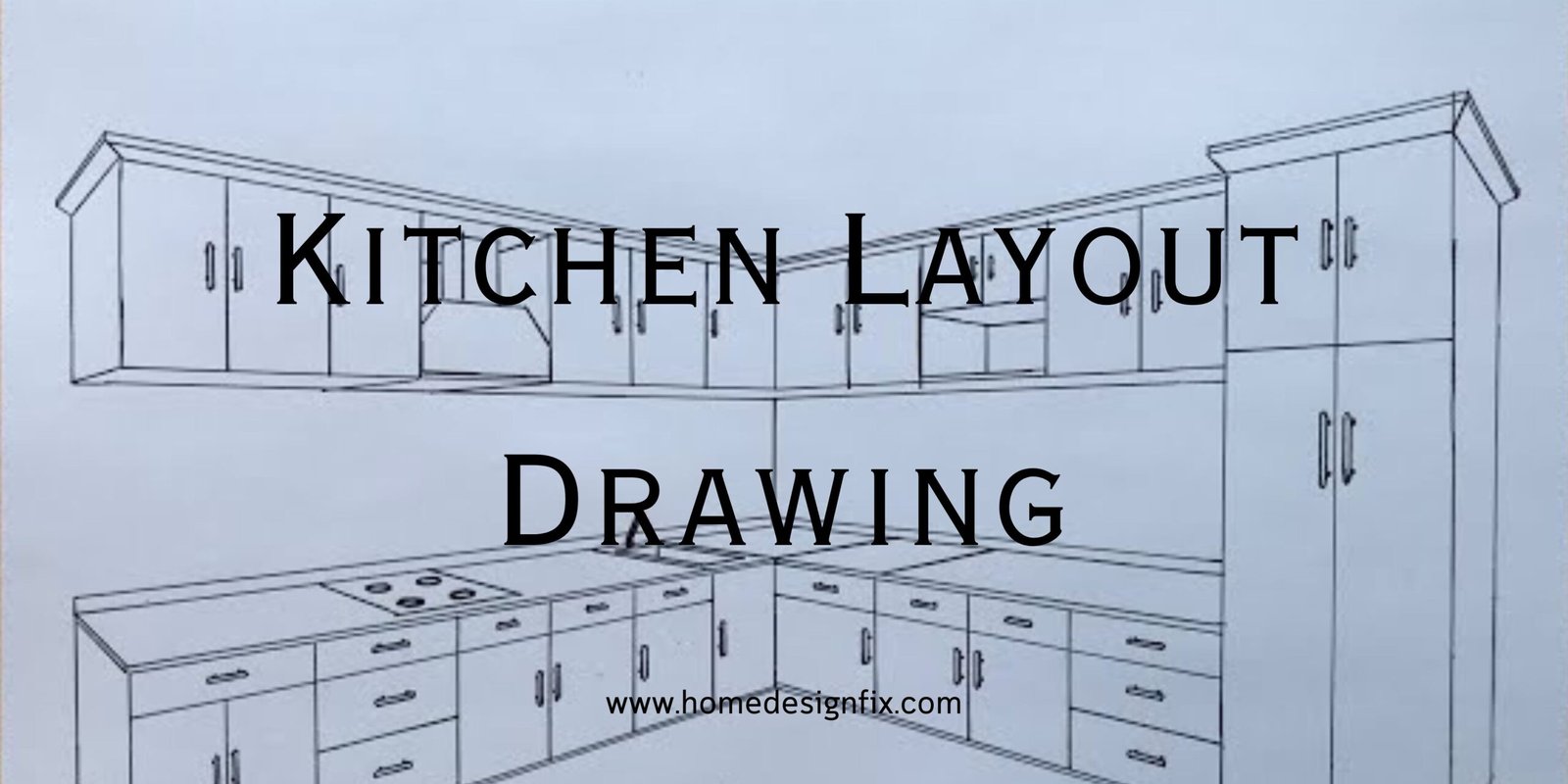When it comes to remodeling or designing a kitchen from scratch, kitchen layout drawing is the crucial first step. A well-thought-out layout sets the foundation for a functional, stylish, and comfortable space. Whether you’re a homeowner, interior designer, or builder, mastering kitchen layout drawings can save time, money, and a lot of future frustration.
In this guide, we’ll walk through the basics of kitchen layout drawings, why they are important, the key elements you need to include, and some expert tips to create the perfect plan.
Why Kitchen Layout Drawing Is Essential
People often refer to the kitchen as the heart of the home. It’s the place where food is cooked, chats occur, and memories are created. Without a proper layout, even the most beautiful kitchens can become inefficient or awkward to use.
A detailed kitchen layout drawing helps you:
- Visualize the space and proportions
- Plan for appliances, storage, and work zones
- Ensure smooth traffic flow
- Optimize functionality and aesthetics
- Communicate ideas clearly with contractors and suppliers
Simply put, the layout drawing is the blueprint for your kitchen’s success.
Key Elements of a Kitchen Layout Drawing
When creating a kitchen layout drawing, there are several elements you must consider:
1. The Kitchen Work Triangle
The traditional idea of the kitchen work triangle, which connects the sink, stove, and fridge, is essential for an effective kitchen design.. The idea is to minimize the distance between these three most-used areas while allowing enough space for movement.
Tips for the work triangle:
- The length of each side of the triangle should be 4 to 9 feet.
- The sum of all three sides should be within the range of 13 to 26 feet.
- Avoid obstacles like islands cutting through the triangle.
2. Types of Kitchen Layouts
Before you start drawing, decide which type of kitchen layout best suits the space:
- Single-wall kitchen: Ideal for compact areas; all components placed on one wall.
- Galley kitchen: Two parallel counters; great for small and medium spaces.
- L-shaped kitchen: Counters on two adjoining walls; open and flexible.
- U-shaped kitchen: Three walls of cabinets and appliances; very efficient for multiple users.
- Island kitchen: Includes a freestanding island; adds prep space and seating.
- Peninsula kitchen: Like an island but attached to a wall or counter; ideal for smaller spaces.
Your drawing should reflect the chosen layout clearly.
3. Measurements and Dimensions
Accuracy is key. Your kitchen layout drawing must include:
- Wall lengths and heights
- Door and window positions
- Location and size of appliances
- Counter heights (standard is 36 inches)
- Cabinet depths (standard base cabinet depth is 24 inches)
- Walkways (at least 36 inches wide; 42 inches is better for multiple cooks)
Always measure twice before committing anything to paper or digital drawings.
4. Appliance and Fixture Placement
In your drawing, mark exactly where the sink, stove, refrigerator, dishwasher, microwave, and other key appliances will go. Also, don’t forget:
- Vent hood locations
- Electrical outlets
- Plumbing hookups
- Lighting fixtures
Planning these early prevents costly changes later.
Steps to Create a Kitchen Layout Drawing
Ready to start? Here’s a step-by-step guide:
Step 1: Sketch the Basic Floor Plan
Draw the outline of the kitchen space, including all walls, windows, and doors. Indicate any structural elements like columns or beams that you cannot move.
Step 2: Mark Fixed Elements
Add in immovable items like windows, doors, vents, and plumbing. This aids in determining the placement of cabinets and appliances.
Step 3: Choose a Layout Type
Select whether you’ll have an L-shape, U-shape, galley, etc. Sketch this into the floor plan lightly at first.
Step 4: Place the Major Appliances
Arrange the sink, stove, and refrigerator to create a practical work triangle. Add other appliances and fixtures once these are set.
Step 5: Draw Cabinets and Countertops
Sketch in cabinets, islands, pantries, and countertops. Don’t forget vertical elements like upper cabinets.
Step 6: Finalize with Details
Add dimensions, label appliances, and mark electrical and plumbing points. Your kitchen layout drawing should now look professional and ready for review.
Tools You Can Use for Kitchen Layout Drawing
You can draw by hand on graph paper or use digital tools. Some popular software options include:
- SketchUp
- AutoCAD
- RoomSketcher
- Home Designer Suite
- IKEA Kitchen Planner
Digital tools can help with precision and allow you to easily make changes.
Common Mistakes to Avoid
When creating a kitchen layout drawing, be cautious of these common errors:
- Ignoring traffic flow: Make sure pathways are clear and wide enough.
- Overloading the kitchen island: Don’t cram too much onto an island; leave room for seating and movement.
- Poor appliance placement: Group appliances logically (dishwasher near sink, microwave near prep areas).
- Not planning storage: Include sufficient cabinets and drawers for utensils, food, and cookware.
- Forgetting ventilation: Good airflow is essential, especially for cooktops.
Taking time at the drawing stage can save you headaches during construction.
Expert Tips for a Successful Kitchen Layout
- Think in zones: Plan zones for prep, cooking, cleaning, and storage.
- Plan for multiple cooks: Widen aisles and avoid bottlenecks if more than one person will cook at the same time.
- Consider sightlines: Especially for open-plan kitchens, think about what you’ll see from other rooms.
- Include enough lighting: Plan for ambient, task, and accent lighting layers.
- Futureproof the design: Think about growing families, aging in place, or resale value.
Conclusion
A kitchen layout drawing is more than just a technical document — it’s a roadmap to a more functional, beautiful home. By understanding key design principles, measuring carefully, and thinking ahead, you can create a kitchen that perfectly matches your needs and lifestyle.
Read More About: Home Design Fix
Bathroom Layout Design


